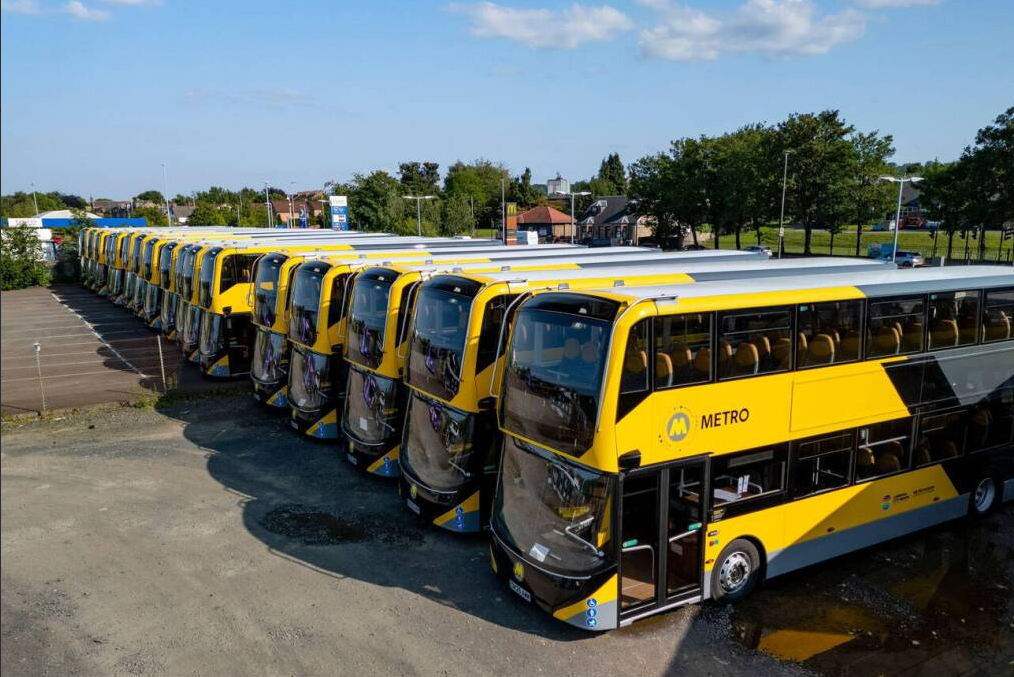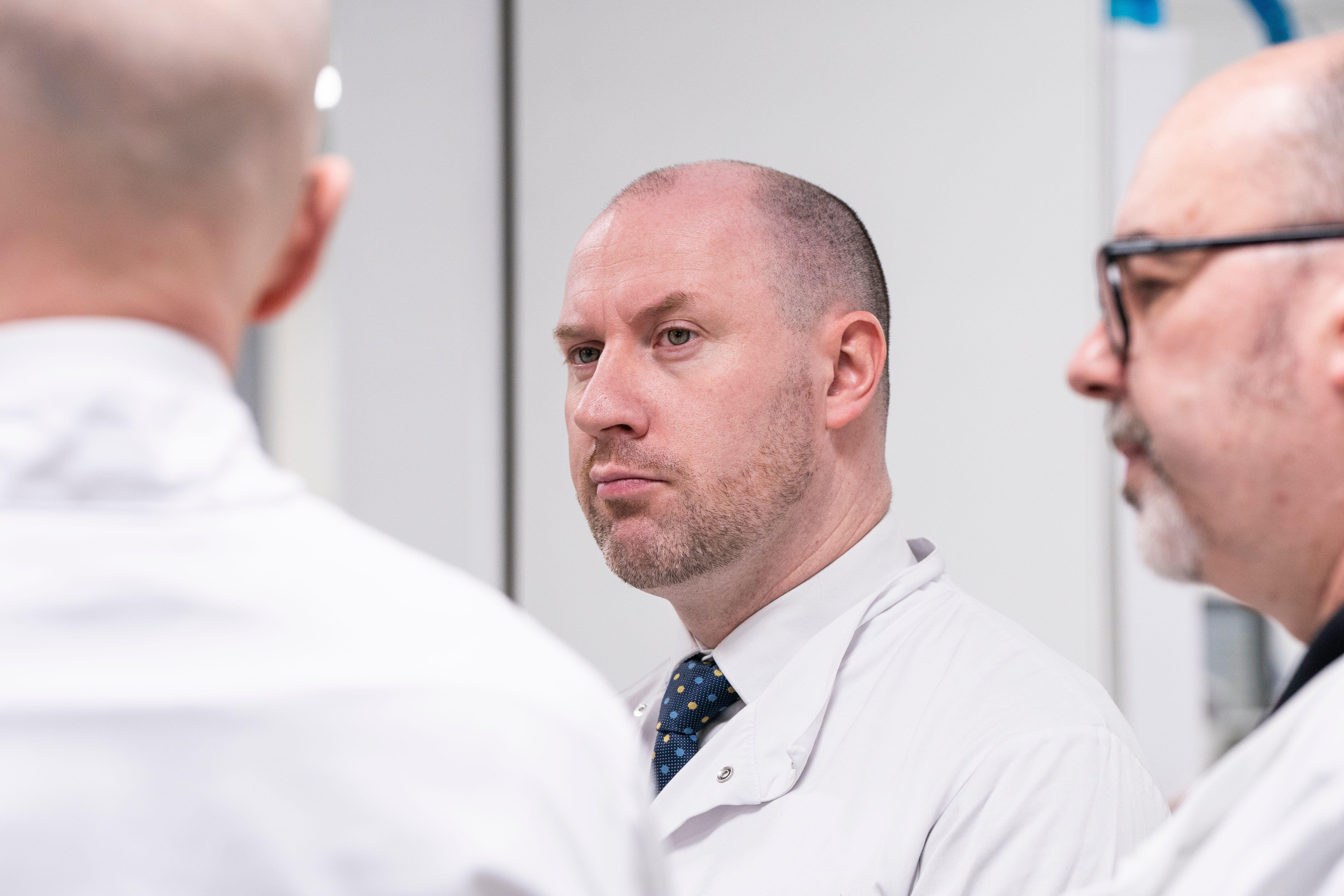Scotland is stuck with a government better at politicking than governing
You wait long enough for a major John Swinney speech and then two come along at once. Following his party’s defeat in the Hamilton by-election the SNP leader sought to get on the front foot, delivering back-to-back addresses across two days earlier this month on the themes of “national renewal” and Scottish independence.
For a party which has been in power for 18 years and which, to use one of the day’s political buzzwords, has become fond of ‘resets’, the first of these two speeches was an attempt to breathe new life into Scotland’s ailing public services. Alongside an increasing role for technology, notably artificial intelligence, the big idea for the health service was the not-altogether-novel suggestion that it could become more proactive, less reactive. Prevention is better than cure, after all, although that will provide little comfort to the nearly 630,000 people on waiting lists, roughly one in nine of Scotland’s population, or cancer patients faced with the worst treatment times on record.
But it was the second of the two speeches, with its focus on Scotland’s constitutional future, which attracted more interest. Discussion of independence has been conspicuous by its absence since Swinney became SNP leader for a second time last year, replacing Humza Yousaf. And while there are good, politically expedient reasons for that, independence remains both the SNP’s raison d’être and the reason many people voted for the party in 2021.
The questionable analysis of the by-election result among some in the SNP was that the party hadn’t talked about independence enough during the campaign. But to be fair to the first minister, it would have been difficult for him to avoid the subject in his speech at the Scotland 2050 conference, which aimed to look ahead to what the country might be like in 25 years’ time.
 Buses destined for Liverpool at the Alexander Dennis plant in Falkirk | Alamy
Buses destined for Liverpool at the Alexander Dennis plant in Falkirk | Alamy
“I know there are many in this room who are not yet persuaded by the case for independence, and others who will never be,” Swinney told his audience at the Assembly Rooms in Edinburgh. “I respect that. But independence is the defining choice for this generation, have no doubt about that. Because the UK status quo has proved itself incapable of delivering on the hopes and ambitions of the people of Scotland.”
The conference was no doubt in the first minister’s calendar for months, but it nevertheless provided an opportune moment to talk about independence just as the knives were being sharpened in the aftermath of Hamilton. All the talk in the run-up to the by-election – called following the death of sitting MSP Christina McKelvie – had been about who was going to come second, Labour or Reform, with the SNP’s victory assumed to be a foregone conclusion. A win for Scottish Labour’s Davy Russell, who secured just under 32 per cent of the vote, was enough for Swinney’s former cabinet colleague Alex Neil to call for him to be replaced as leader, while The Herald reported that senior party figures had met to discuss the first minister’s removal. One source told the newspaper the party’s conference would be a “bloodbath” if there was nothing substantive from the leadership on progressing independence.
The first minister, however, has more immediate concerns, including the threat by bus manufacturer Alexander Dennis to move its operations to England with the loss of up to 400 Scottish jobs. The company, which employs 1,850 people in the UK, is considering the closure of plants at Falkirk – where Alex Salmond and Nicola Sturgeon held a photocall to set out the economic case for independence in 2013 – and nearby Larbert, moving manufacturing to Scarborough. The firm has blamed strong competition from China and UK procurement rules which prevent giving priority to local producers.
When the matter was raised at First Minister’s Questions the day after the company made its announcement, Swinney said Alexander Dennis had received more orders for zero emission buses through a government fund than any other manufacturer since 2020. But he blamed constraints placed on his government by the UK-wide Subsidy Control Act which regulates how public money is awarded.
“This is what’s commanding my attention and my focus just now – how can we find a way to remain legally compliant with the Subsidy Control Act and enable these obstacles to be overcome? I welcome the fact that we’ve had engagement with the UK Government… We’re going to do everything we can to find a way through the Subsidy Control Act provisions…”
But Scottish Labour leader Anas Sarwar compared the Scottish Government with Manchester mayor Andy Burnham who he said had ordered almost four times as many buses from Alexander Dennis. “When Scotland needs buses, [the Scottish Government] buys from China,” Sarwar said. “When Scotland needs ferries, they buy from Poland and Turkey. All they want to do is manufacture grievance and all they offer is waste and incompetence. They have the powers, and they have the money but, as always, they want to blame someone else.”
After nearly two decades of SNP government, it is now much easier to identify areas where things have got measurably worse than better.
It later emerged that Swinney had been warned last year that the bus maker was considering relocating. In a letter sent to the first minister in August, Paul Soubry, president and chief executive of Alexander Dennis’ parent company, Canadian firm NFI, said recent developments had left the company with “the impression the Scottish Government has little regard for domestic bus manufacturing jobs in Scotland”.
“Alexander Dennis operates in a market that had left them with the impression that governments do not seem to care about domestic economic importance,” Soubry wrote to the first minister. Earlier this week, union reps told MSPs on Holyrood’s Economy and Fair Work Committee that the bus company’s decision to quit Scotland for England would be due to “political failure”.
The row over bus manufacturing comes as the UK Government publishes its new industrial strategy, a 10-year plan to promote key sectors and boost economic growth. Along with an ongoing commitment to review the “impact and proportionality” of the subsidy control regime, the government said it would increase the threshold at which subsidies must be referred to the Competition and Markets Authority (CMA) from £10m to £25m. However, for sensitive sectors – of which the manufacturing of motor vehicles and shipbuilding are part – the threshold will remain at £5m.
Publication of the strategy was overshadowed by the conflict in the Middle East and the growing rebellion in the Labour Party over welfare reform, with more than 120 MPs attempting to block cuts to disability and sickness benefits which critics say will push more people into poverty. Nevertheless, there was significant news for Scotland in the document, some of which had already been announced in the Chancellor’s Spending Review, such as the U-turn over a decision to scrap a £750m supercomputer at the University of Edinburgh and funding to support the Acorn carbon capture project at St Fergus in Aberdeenshire.
The defence industry is among eight sectors – including manufacturing – identified in the strategy which will be prioritised over the next decade, including a Scottish-specific defence growth deal. After decades of underinvestment in defence as a result of the so-called ‘peace dividend’ which followed the end of the Cold War, there has been a radical reassessment after Russia’s invasion of Ukraine and especially since the start of Donald Trump’s second term in the White House. An indication of that dramatically shifting landscape was the announcement last week that Britain will purchase a dozen new fighter jets which can carry nuclear bombs.
With an increasingly dangerous world comes opportunities for contracts, jobs and investment. The SNP’s position – that it will provide money to arms manufacturers but not for the manufacturing of arms – is both illogical and hypocritical given its support for arming Ukraine against Russian aggression, for example. When it emerged earlier this month that Scottish Enterprise had refused £2.5m in funding to a specialist welding skills centre to support submarine manufacturing on the Clyde, putting the whole project in jeopardy, the SNP was accused of “student politics”, a sentiment that’s hard to disagree with. The UK Government said it would provide the funding to avoid the entire project falling through.
And yet the SNP’s failure to protect manufacturing jobs is just one measure by which this government can be shown to have fallen down on the job. Last week a slew of statistics showed the building of social homes at the lowest level in a decade, sexual crime at its second highest level since 1971 (in part due to increased reporting) and the worst cancer waiting times on record. Asked whether lives were being lost as a result of later diagnosis, public health minister Jenni Minto – to her credit – admitted that was likely to be the case. Given the priority with which cancer is treated in the NHS, we can only surmise how bad things have got elsewhere.
 Health secretary Neil Gray was criticised for being in Japan when the cancer statistics were published | Alamy
Health secretary Neil Gray was criticised for being in Japan when the cancer statistics were published | Alamy
After nearly two decades of SNP government, it is now much easier to identify areas where things have got measurably worse than better. Only when there are points to score – such as when it speedily announced the introduction of a new winter fuel payment before the UK Government’s recent U-turn – will this administration move quickly, a party more interested in politicking than governing.
There has, however, been progress on tackling child poverty, an issue identified as a top priority by Swinney and an area likely to be an important battleground in the run-up to next year’s election. According to analysis by the Big Issue, there has been a “parting of the ways” across the UK since Scotland introduced the Child Poverty Act in 2017, with a 12 per cent drop in relative child poverty north of the border compared to a 15 per cent increase in England and Wales.
Indeed, as Labour got itself into a mess at Westminster over welfare reform, social justice secretary Shirley-Anne Somerville confirmed Scotland would push ahead with the introduction of a new payment to help mitigate the damaging two-child benefits cap, something the government in Edinburgh could have done at any point since the policy’s introduction in 2017. The benefit is expected to cost between £140m and £150m in its first year but the value to the SNP in making Labour look bad is priceless.
In normal times a party which had achieved so little in government would be sent packing at the first possible opportunity. And yet all the polls currently predict an SNP victory in May 2026 with Reform set to take a significant number of votes off Labour and the Tories. Stoking fear about the rise of Nigel Farage didn’t work for Swinney in Hamilton, so expect the SNP to fall back on their tried and tested message about an independent Scotland. There are those with a deeply held conviction that Scotland’s future is better outside the UK, voters who will feel compelled to lend the SNP their vote no matter what. But on the evidence of the past five years at least, they shouldn’t expect too much in return.
Holyrood Newsletters
Holyrood provides comprehensive coverage of Scottish politics, offering award-winning reporting and analysis: Subscribe